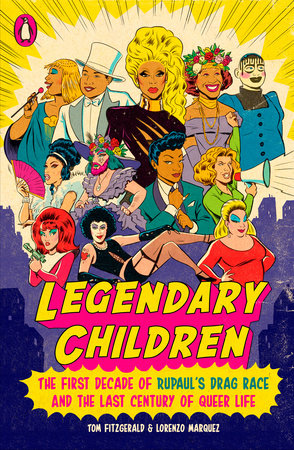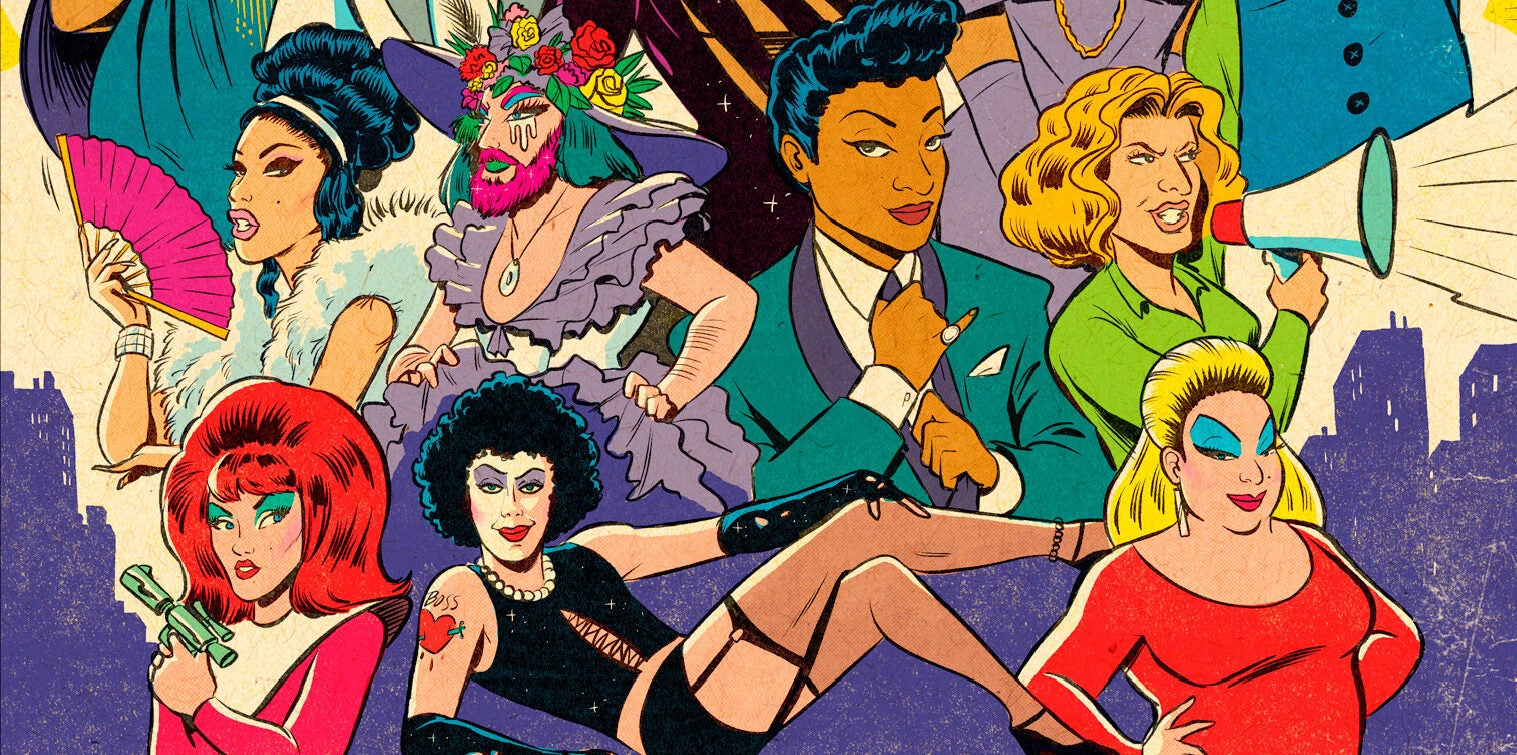Introduction
This book is meant to be read one-handed.
No, you didn’t accidentally pick up the wrong book or get a defective copy with the wrong cover on
it. What we mean is that this book was devised, from its inception, to spur the reader on to look up more about the people highlighted and spotlighted in it. We want you to become so curious about what Julian Eltinge looked like or how Charles Pierce sounded or whether we’re doing Tandi Iman Dupree jus- tice when we describe her legendary lip sync that you can’t help but want to see it for yourself. We want you to grab your phone and look up a video or blog post or wiki entry about any of the people or events mentioned in this book whenever the curiosity strikes you. There is an Alexandria-size library of spectacular queer history and cultural essays literally at your fingertips, and this book was written not only with that in mind but in a way that encourages you to look someone up because you read about them in these pages. Practically every performer mentioned in this book has some aspect of their work preserved online, which means you can look up Jackie Shane singing “Walking the Dog” on Canadian television in 1965 or Sylvia Rivera’s legendary speech at the Christopher Street parade in 1973 as easily as you can look up Manila Luzon’s latest music video.
RuPaul’s Drag Race started out as the purest representation of gay male social culture that television had ever seen, and eventually morphed into a celebration of LGBTQ life and culture in general, encompassing all the work and lives of count- less queer people who came before it. Every aspect and feature of the show can be traced to some long-standing tradition, event, or practice in queer life, queer communities, and queer culture. RuPaul and company devised a show that serves as an actual museum of queer cultural and social history, drawing on queer traditions and the work of legendary figures going back nearly a century. In doing so, Drag Race became not only a repository of queer history and culture but an examination and illustration of queer life in the modern age. It is a series of snap- shots illustrating how LGBTQ folks live, struggle, work, and reach out to each other—and how they always have.
The point of this book isn’t to reveal all the secrets and hidden meanings behind Drag Race—the show isn’t that deliberate in its intentions; and besides, that’s not how culture works. The point is to show that Drag Race exists smack on the continuum of queer culture and history and naturally pulls references from up and down its timeline, sometimes deliberately and sometimes as a result of a cultural osmosis.
The history of the show itself is something of a queer Cinderella story, a nearly perfect metaphor for drag: A dirty little smeared-lens, poorly lit, low-def, rough-looking drag revue sandwiched between HIV meds and leather gear ads on an extremely niche cable network went on to become a worldwide glamour extravaganza. The journey of the show perfectly mimics the journey of drag as an underground form of expression that eventually found its way to the highest arenas of media and entertainment. The first season of Drag Race looks like it was shot in the dimly lit back room of a bar somewhere, but by the tenth season, it looked exactly like what it was at that point: a massive hit variety show loaded with sparkle and glamour, populated by impossibly beautiful beings with sickeningly flawless makeup. We’re going to show how queer culture generally and drag culture specifically made a very similar journey. When we say “queer culture,” that’s not necessarily the same thing as queer equality or legal protections, nor does it encompass the broad spectrum of queer existence. It’s the shared culture created or curated by queer people for queer people arising out of our experiences as queer people.
The story of RuPaul’s Drag Race is the same as the story of the LGBTQ political and cultural movement of the past half century; it’s impossible to separate one from the other. You can’t talk about RuPaul’s Drag Race in any depth without talking a bit about the history of drag as a form of expression and a part of pop culture. And you can’t talk about drag as a form of expression without talking about its place in queer life. And you can’t talk about queer life over time without having some idea of what LGBTQ folks faced in the past and how their lives played out.
For the majority of the twentieth century, it was illegal for a man to appear in public wearing women’s clothing. It was illegal for men to have sex with other men, and the mere act of flirting could land a man in jail or a mental institution, or have him medicated against his will (a practice known as “chemical castration”). It was illegal to produce or distribute any work that depicted same-sex desires, and it was illegal for bars and restaurants to serve alcohol to gay or lesbian patrons. Same-sex desire and gender nonconformity were considered mental illnesses by the American Psychiatric Association and the majority of the medical community. It’s important to know these things in order to understand just how brave and fuck-you fierce our queer forebears actually were. They didn’t just declare them- selves in the face of societal disapproval; they did so in the face of attempted social genocide. And they just kept on going, surviving and then thriving, creating art, communities, and families— and redefining all three in the process. These people were criminals and outlaws, punks and badass bitches. Maybe they didn’t always feel like it at the time, but they were revolutionaries. More important, they won the revolution. It just took some time for everyone else to notice.
But we would never want to claim that those queens and queers of the past lived lives of misery or tragedy. We think a good deal of our LGBTQ forebears would have summed up their lives as ones filled to the brim with a kind of ragingly defiant beauty—gorgeous weeds breaking fabulously through the cracks in the pavement. We choose to see them that way because we feel it pays tribute to their struggles without depicting them as tragic. They were too beautiful, too strong, too brave for us to see them any other way. We hope we’ve done them justice, and we hope you see them the same way by the time you’ve read all their stories. They were, every one of them, without question, legends.
Now, put your face on. We’ve got a show to do.
Copyright © 2020 by Tom Fitzgerald. All rights reserved. No part of this excerpt may be reproduced or reprinted without permission in writing from the publisher.





